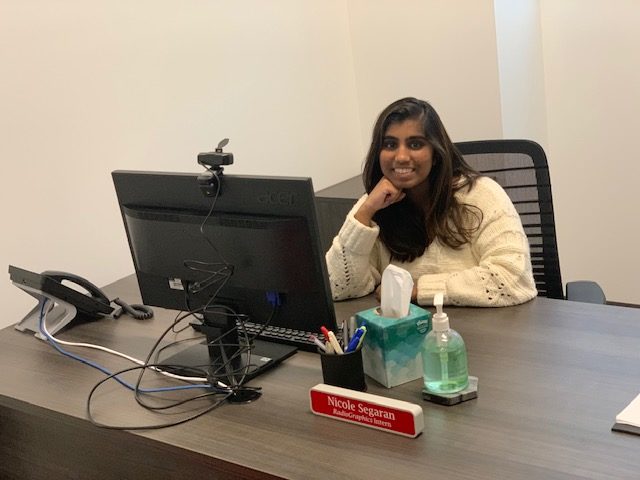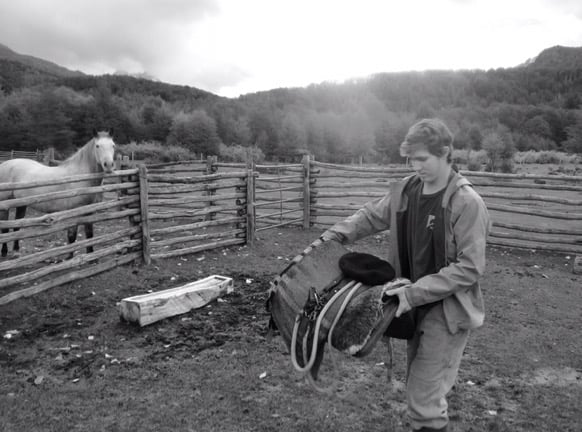Nicole Segaran ’25 will never forget the day she made the decision to defer her enrollment to Stanford amidst the COVID-19 pandemic.
“I just felt like the entire world kind of came tumbling down,” she said, referencing the uncertainty she felt. “I had been so excited to go to college, and I just didn’t know what I was going to do or where I was going to go.”
Segaran is one of 369 gap year students who were originally admitted to the Class of 2024 but instead chose to matriculate this fall as part of Stanford’s largest-ever undergraduate class. The COVID-19 pandemic drove many students like Segaran who were not previously considering a gap year to defer their enrollment for a year.
Segaran spent her gap year exploring her interests in science and medicine through two internships: one at the Mayo Clinic in Scottsdale, Ariz., where she joined a team studying minimally invasive therapeutics like bio gels and catheters, and another at RadioGraphics, a medical education journal for radiologists.

For students like Caeden Greene ’25, the shift to online classes due to the pandemic was a deciding factor in his decision to defer his enrollment.
“I already had been thinking about taking a gap year,” Greene said. “At some point I was like, you know, we’re just gonna do it, because it seemed like a lot of money to pay to go to school online.”
Greene began his year at a firefighting academy. He became a certified wilderness EMT and worked at a ski resort. After Chile’s borders reopened, Greene also spent four months working on a ranch in Patagonia.
Greene highlighted the transition back to an academic environment as something that has been challenging for him, saying that at times, he has “found that a return to testing and studying and staying focused on a computer screen or paper for longer than like an hour is difficult.”
But at the same time, Greene said that his gap year experience made the transition less daunting.
“It definitely lowered the stakes for me,” Greene said, emphasizing that he feels the maturity and self-sufficiency he gained during his gap year helped him learn how to prioritize his needs and manage his time well.
Segaran said that she found the transition difficult, especially after having been surrounded by a cohort of professional adults and missing out on socializing with her peers.
“I struggled a lot especially with the social aspects after working around adults for an entire year,” she said.
Segaran also said that her college life has differed from what she initially expected.
When going into her frosh year, Segaran said she “had a golden picture of how college was going to be,” adding that “it was a little disconcerting” when she realized that many of the social and academic struggles from high school persisted and that Stanford would require a period of adjustment. To help with the transition, Segaran said she has utilized Stanford’s counseling services through Counseling & Psychological Services, but found the process of seeking out and arranging help to be complicated.
According to Associate Dean and Senior Director of First Year Experience Warren Chiang, the University “highly encourages” admitted students to take gap years.
These students, Chiang wrote in a statement to The Daily, “tend to pursue worthy projects, volunteerism, work and come to campus with a bit more maturity, experience and readiness.”
Chiang added that there is positive data to support students taking gap years. “In most years, additional steps to support gap year students aren’t always needed for the reasons already mentioned — these students are often more ready and responsive to the prospect of onboarding to the University than their peers who did not take a gap year,” Chiang wrote.
Even though Stanford has expressed its support for students taking gap years, Greene said he wishes the University provided more resources — beyond a list of possible gap year opportunities provided by BEAM, Stanford’s career education center — for students who may be considering taking a gap year, but for whom finances or other resources may be a challenge.
Greene cited the Duke University Gap Year Program as an example. Through the program, accepted Duke students can apply to receive $5,000 to $15,000 of funding for their gap year.
“I think they would find that their students are more prepared for college, and end up doing these incredible things that influence their time at Stanford,” Greene said of the potential of a program like Duke’s. Other colleges offer similar programs, including the Novogratz Bridge Year Program at Princeton University.
Regardless of the growing pains that have come with the transition, Greene and Segaran both said that they are settling into life on the Farm.
“I’ve gotten a lot of support from the friends and peers I’ve made,” Segaran said. “I’m glad I took my gap year. I’m glad I am here where I am today.”
Greene echoed Segaran, adding that the transition in no way made him doubt or regret his decision to defer.
“I would just encourage anybody who wants to take a gap year to take one,” Greene said. “It’s one of the best decisions you’ll make. Just in terms of how much you grow as a person. And that’s, at the end of the day, just as important as how much math you know.”
